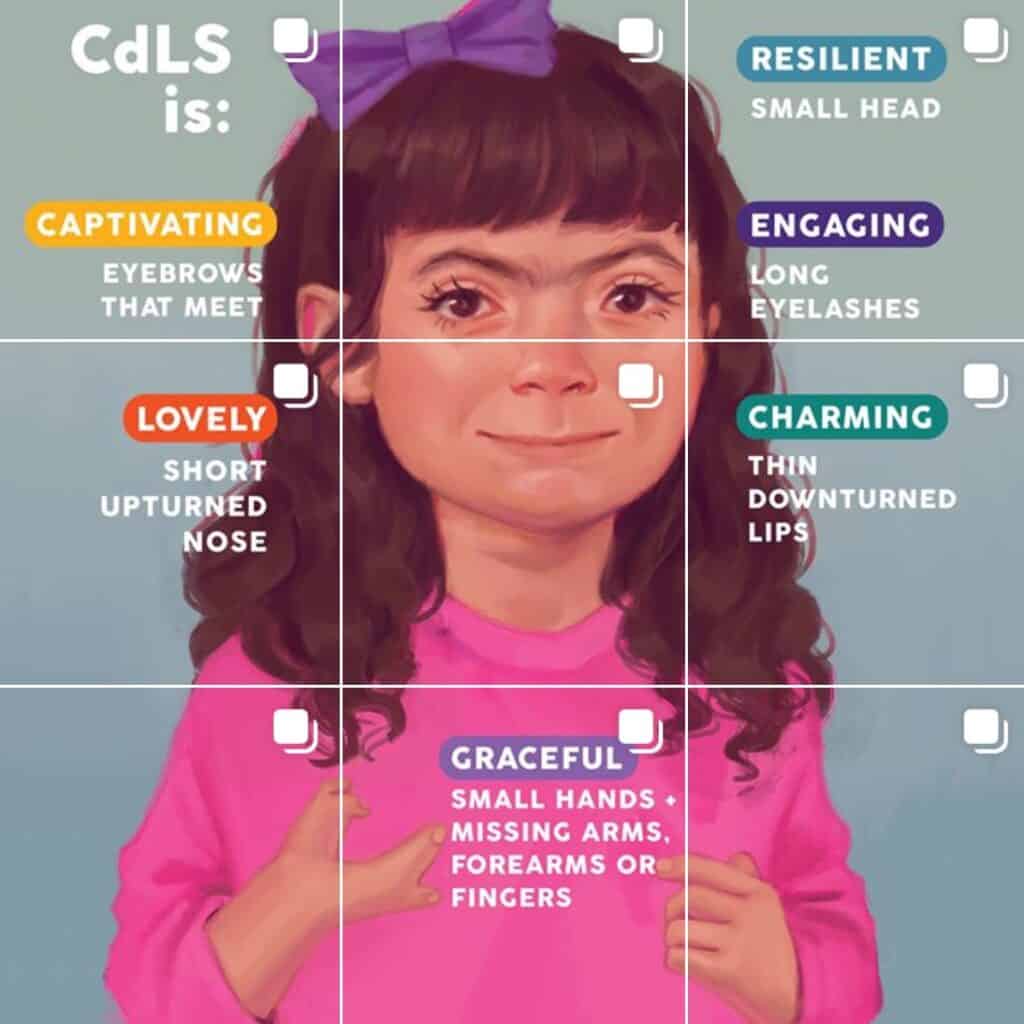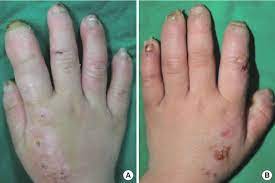Overview
Cornelia de Lange syndrome (CdLS syndrome) is a congenital genetic disorder. Multiple physical, intellectual, and behavioral characteristics describe it. Children with CdLS typically have a low birth weight, diminutive stature, and a reduced head circumference (microcephaly). The majority also have developmental delays ranging from modest learning difficulties to serious intellectual disability. The condition is named after the Dutch doctor who was among the first to describe it properly in 1933. It affects around 1 in 10,000 babies.
Epidemiology
Cornelia de Lange syndrome affects between 1 in 10,000 and 30,000 babies, while the actual frequency is unclear. Cornelia de Lange syndrome is likely underdiagnosed because individuals with moderate or infrequent symptoms may never be identified as having the disorder.
Causes
CdLS can be inherited as either an autosomal dominant or an X-linked disorder. The majority of affected individuals have an abnormal gene due to a recent gene mutation. Seven genes have been linked to CdLS, including the NIPBL gene on chromosome 5, the SMC1A gene on the X chromosome, the SMC3 gene on chromosome 10, the Rad21 gene on chromosome 8, the HDAC8 gene on the X chromosome, the ANKRD11 gene on chromosome 16, and the BRD4 gene on chromosome 19. Approximately 60% of afflicted individuals have mutations in the NIPBL gene, whereas a minor number (approximately 10%) have mutations in other genes. In the future, other genes may be identified to be related with CdLS.
The occurrence of dominant genetic illnesses occurs when just a single copy of a defective gene is required to induce a certain disease. The faulty gene might be inherited from either parent or originate from a new mutation (gene alteration) in the afflicted person. Each pregnancy carries a 50% chance of passing on the faulty gene from the afflicted parent to the offspring. The risk is identical for men and women.
X-linked genetic illnesses are caused by a mutated gene on the X chromosome and predominantly affect males. Carriers of a condition are females with a disease gene present on one of their X chromosomes. Females have two X chromosomes, but one is inactive, rendering the genes on that chromosome nonfunctional. Therefore, carrier females typically do not exhibit symptoms. Frequently, the X chromosome containing the defective gene is inactivated. In CdLS, however, because the gene mutation is likely dominant over the equivalent gene on the X chromosome, girls frequently exhibit the same results as men.
Males get one X chromosome from their mothers, and if they inherit an X chromosome with a disease gene, they will acquire the disease. With each pregnancy, female carriers of an X-linked ailment have a 25% chance of having a carrier daughter like themselves, a 25% risk of having a non-carrier daughter, a 25% chance of having a son afflicted by the disease, and a 25% chance of having an unaffected son. Males with X-linked diseases transmit the illness gene to all their carrier daughters. A guy cannot transmit an X-linked gene to his kids since males always transmit their Y chromosome to male progeny instead of their X chromosome.

Symptoms
Cornelia de Lange syndrome is characterized by distinct facial characteristics, slowed bodily growth, cognitive difficulties, and other anomalies. Possible symptoms include:
- Hand and arm malformations
- Microcephaly
- Seizures
- Digestive issues include gastroesophageal reflux (GERD)
- Autism spectrum conditions
- Sexual organs which are underdeveloped
- A split palate
- Heart conditions
- Testes unable to descend into the scrotum (cryptorchidism)
- Eyebrows that are high, arched, or meet in the middle
- Large gaps between teeth or eyes
- Hearing impairment
- Excessive hair development
- Myopia
- Dental anomalies
In moderate forms of Cornelia de Lange syndrome, some of the foregoing symptoms may be less severe or altogether absent.
Diagnosis
Your doctor will study your child’s medical history and do a physical examination to diagnose CdLS. In addition, your physician may conduct genetic testing to identify mutations in the five genes related with CdLS (NIPBL, RAD21, SMC3, HDAC8, and SMC1A) and additional genes of relevance.
Treatment
Your child’s physician may offer therapy for digestive disorders. Gastroesophageal reflux disease (GERD) is caused by the reflux of stomach acid into the esophagus. Depending on the patient’s age, GERD can be treated with medications that lower stomach acid or promote quicker stomach emptying. In extreme situations or if the intestines are twisted, your physician may also propose surgery. If nutritional requirements are not being fulfilled, your doctor may recommend a nutritional supplement or an intervention that delivers nourishment directly into the stomach.
Your physician may prescribe seizure medicines. Hearing aids and cochlear implants can treat hearing loss. In addition, your doctor may suggest surgery or other therapies for heart problems or to increase the movement of your hands, arms, legs, or feet.
Physical treatment, speech therapy, or occupational therapy may also be required for your child’s growth and long-term prognosis to improve. If your kid lacks linguistic abilities, your doctor may also propose alternate techniques of communicating, such as sign language.



